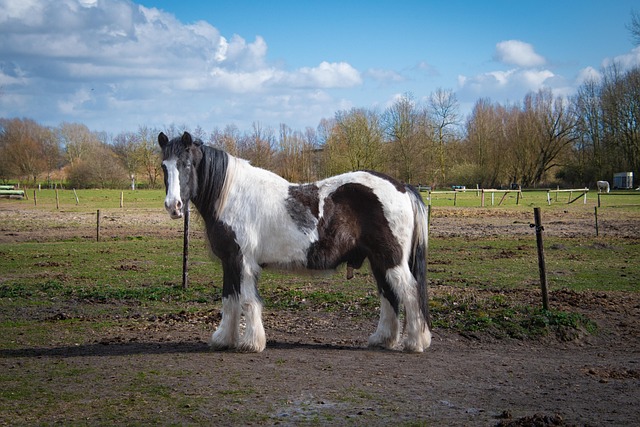When it comes to controlling internal parasites, fenbendazole for horses has long been considered a gold standard. But what if this trusted dewormer, originally designed for horses, were also considered for how it functions in cats? Exploring cross-species applications is not merely a matter of curiosity; it demonstrates how safety, dosage, and preparation affect large animals like horses and small animals like cats. Such extended understanding is what encourages owners, breeders, and veterinarians to make improved choices within parasite control strategies.
The veterinary field has struggled with higher levels of parasite resistance. In 2021, a study in Veterinary Parasitology reported that as many as 40% of strongyles in US horses exhibit decreased sensitivity to conventional wormers (Nielsen et al., 2021). Against this backdrop, comparison with small-animal use puts into perspective how safety profiles and response to treatment vary across species.
Cross-Species Safety of Horse Fenbendazole
One of the primary reasons veterinarians continue to use horse fenbendazole is that it has a wide margin of safety. Horses of nearly all ages, from foals to brood mares, tolerate it well, making fenbendazole a mainstay of long-term parasite control. That reliable safety profile carries over in the small-animal community as well, where specialty preparations such as fenbendazole suspension for cats and fenbendazole suspension for dogs are used as a matter of course for gastrointestinal parasites such as roundworms, hookworms, and whipworms.
Cross-species comparisons, however, reveal important nuances. Horses often require higher doses of fenbendazole equine products because of their large body mass and the higher parasite burdens associated with grazing. Cats and dogs, by contrast, metabolize the drug differently, and even slight overdosing can cause gastrointestinal upset or, in rare cases, neurological reactions. Therefore, precise weight-based dosing is essential in smaller animals, where liquid suspensions ensure accurate administration.
The underlying principle is clear: although the same active ingredient functions across species, safety hinges on proper dosage, formulation, and veterinary oversight. Misjudging these variables risks under-treating, leading to resistance, or over-treating, compromising animal health.
Why Fenbendazole Liquid and Suspensions Matter
Dosing form is not just a matter of convenience—compliance and efficacy are affected as well. Fenbendazole liquid in horses provides an easy alternative to paste formulations and is often mixed with food to minimize stress to the animal during treatment. Cats find palatable suspensions a breeze to take so owners can successfully administer multiple-day courses with ease.
Most big horse operations and numerous barns rely on fenben 10 as part of official parasite control programs, while small-animal clinics emphasize proper drop-by-drop administration to cats. The message is clear: the correct formulation for the species is what leads to worming programs succeed or fail.
The Broader Role of Fenbendazole Wormer in Equine Programs
Despite its potential versatility, relying solely on a fenbendazole wormer may provide long-term resistance issues. Horses that are in high-risk scenarios, such as communal pastures or stable boarding, often need to be rotated with other medications like toltrazuril in horses or albendazole to target parasites outside of the spectrum of fenbendazole. Therefore, this dual approach avoids selective pressure against parasites as well as minimizing the chances of resistant populations emerging.
Vet advice emphasizes regular habits, rather than occasional treatment. Horse owners usually incorrectly assume that sporadic dosing will be enough, but parasites breed extremely quickly, and infrequent treatments leave fatal windows. Regular application of a fenbendazole equine dewormer, in combination with environmental husbandry practices such as removal of manure, rotation of pasture, and minimizing overgrazing, is required to keep infestations at acceptable levels.
For equine herds, the goal is not only immediate relief but also sustainable parasite management. Fenbendazole equine treatments, combined with careful use of alternatives and pasture hygiene, produce an even stronger barrier to common threats like styles and roundworms. Domestic cats, however, are not faced with identical grazing risks, but are still safeguarded by accurate dosing and an absence of overuse that would breed resistance among domestic animals.
Human Insights for Owners
Real-world experience teaches several common mistakes that erase results:
- Numerous horse owners keep dewormers in tack rooms where they are exposed to heat and sunlight. This is a loss of potency that causes less effective parasite control. Storage in a cool, dry place maintains efficacy.
- Cat owners often stop treatment after one or two doses, not realizing that full multi-day courses of fenbendazole suspension for cats are necessary to clear parasite burdens completely.
- In equine barns, eye dosing rather than precise weight measurement results in under-dosing, hastening resistance. Always measure horses or use a girth tape for accuracy.
Safety Across the Spectrum
Whether used as fenbendazole for horses in large equine herds or as a small-animal suspension for cats, the drug’s real value lies in its safety and adaptability. Horse fenbendazole shows us how a reliable, broad-spectrum wormer can serve both ends of the animal spectrum when handled correctly. Formulations must be tailored to the animal, precise dosing is essential, and compatibility with other treatments—such as toltrazuril equine medications—helps maintain parasite programs as effective in the long term. Learn how toltrazuril for horses dosage complements fenbendazole programs.

